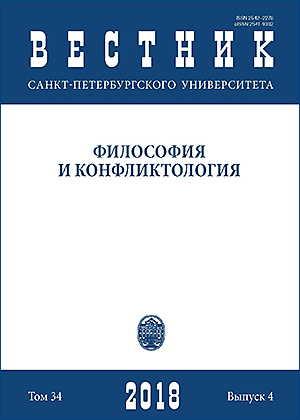The ultimate foundation of religion
DOI:
https://doi.org/10.21638/spbu17.2018.414Abstract
The article presents the main ideas of the concept, according to which religion in its genesis and development is rooted in the basic, existential human intentions. Such intentions are a synthesis of psychophysiological and socio-cultural motivations. Basic intentions are formed during the long period of phylogenesis of mankind and are necessarily present in ontogenesis of each individual. These intentions are the ultimate foundations of religion. Throughout the history of religion, they act as a constant factor of paramount importance, the constants of the existence of religion. In addition to ultimate foundations on the existence of religion affect historically volatile, situational factors. They determine historical, ethno-cultural and confessional variability of religion. In contrast to situational factors the ultimate foundations exist as universals of human existence. As such, they substantiate not only a religion. Religion is one of the spiritual formations that arise as a way of mastering the ultimate foundations of human existence and exist as a way of regulating relations with them. Basic intentions are represented in consciousness as the highest meanings and the most important life orientations. Higher meanings and orientations receive the status of sacred objects and super-values in religious mentality. Each religion constructs images of sacred objects and hierarchy of super-values according to historical, ethno-cultural, socio-political conditions of its existence, but in its ultimate foundations all religions are united. The ultimate foundations of religion determine the fundamental unity of religion as a spiritual formation.
Keywords:
religion, the ultimate foundations, intention, super-valued, sacred image
Downloads
References
E. S. (ed.), Entsiklopediia religii [Encyclopedia of religions], Akademicheskij proekt Publ., Moscow, Russia, pp. 1069–1073.
Downloads
Published
How to Cite
Issue
Section
License
Articles of "Vestnik of Saint Petersburg University. Philosophy and Conflict Studies" are open access distributed under the terms of the License Agreement with Saint Petersburg State University, which permits to the authors unrestricted distribution and self-archiving free of charge.






